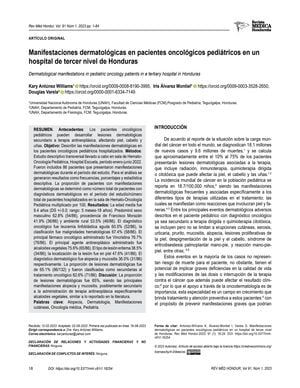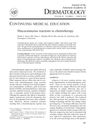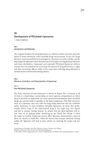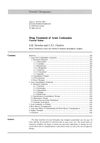Dermatological Manifestations in Pediatric Oncology Patients at a Tertiary Hospital in Honduras
June 2023
in “
Revista médica hondureña
”

TLDR Most pediatric cancer patients in the study developed skin problems, often due to their cancer treatment.
In a descriptive cross-sectional study conducted at the Pediatric Hemato-Oncology ward of Hospital Escuela in Honduras from January to June 2022, 86 pediatric oncology patients who developed dermatological manifestations were examined. The average age of the patients was 9.4 years, with a majority being male (62.8%) and from rural areas (53.5%). The most common oncological diagnosis was acute lymphoblastic leukemia (60.5%), and the primary oncological drug administered was Vincristine (76.7%). Dermatological manifestations occurred in 65.1% (86/132) of the hospitalized patients, with alopecia and mucositis being the most common, accounting for 36.0% each. These conditions were classified as secondary to oncological treatment in 82.6% (71/86) of cases, with plant alkaloids being the main antineoplastic agents implicated. This aligns with findings reported in the literature, suggesting that these dermatological issues are likely a consequence of the antineoplastic therapy.



